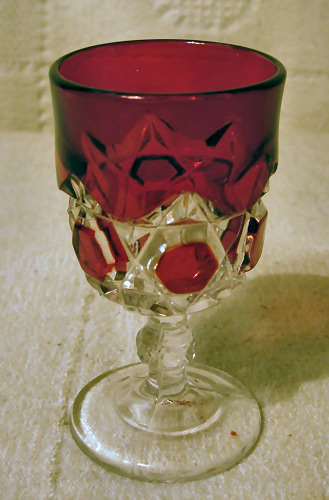


| I collect very little glassware due to the fact that I simply do not care that much for it, and I do not like the threat of breakage. This piece, though, is a treasured item in my entire collection of antiques. It was owned by my father's family. My father's mother, Jennie (Bowser) Smith won the small goblet in a game at a county fair in the 1920s. In a sense it is "carnival glass" because it was a prize given out at a fair or carnival. Of course this piece isn't composed of glass of the iridescent colors known properly as carnival glass. Instead it is what is known as red cut to clear glass. Cut glass is not actually 'cut'. It is produced by taking pressed glass (i.e. glass blown or pressed into a mold) and sanding (i.e. cutting) certain parts with a sanding wheel. In this case, the glass is clear with a thin layer of red over the surface, and when the glass is sanded, the thin layer of red is sanded or cut off 'revealing' the clear glass underneath. In the image above, the lines where the mold pressed together are visible, especially on the right side of the base. |
